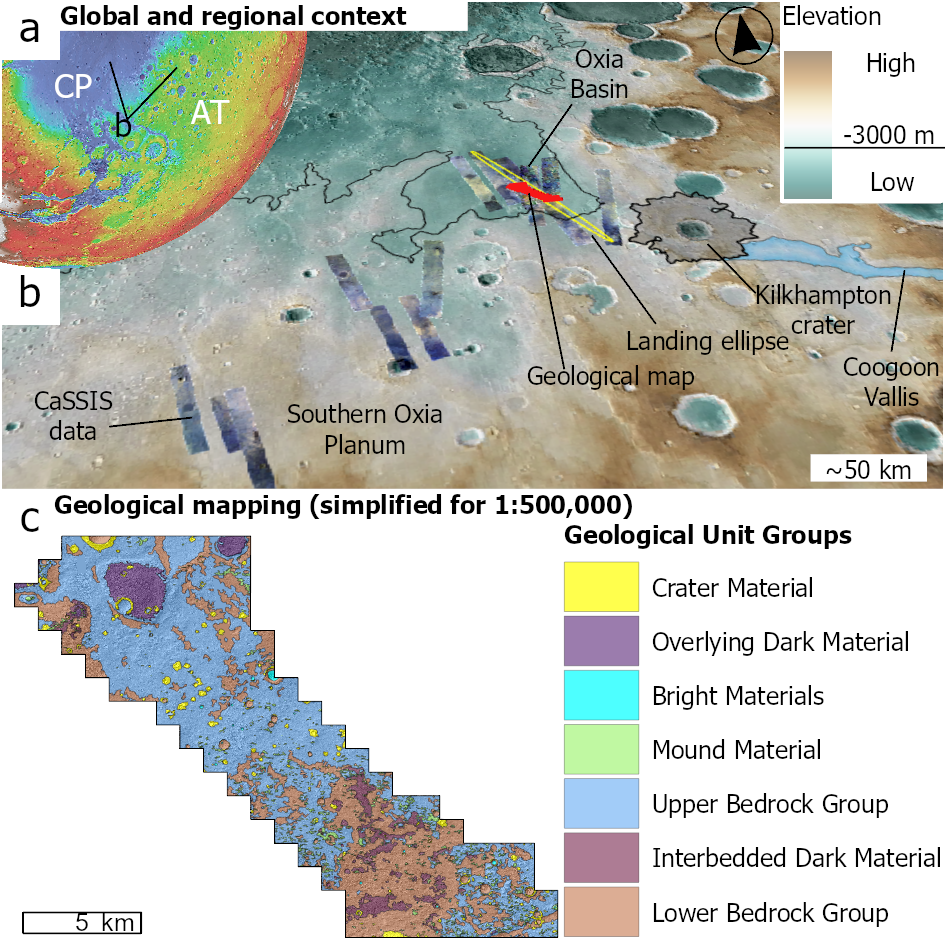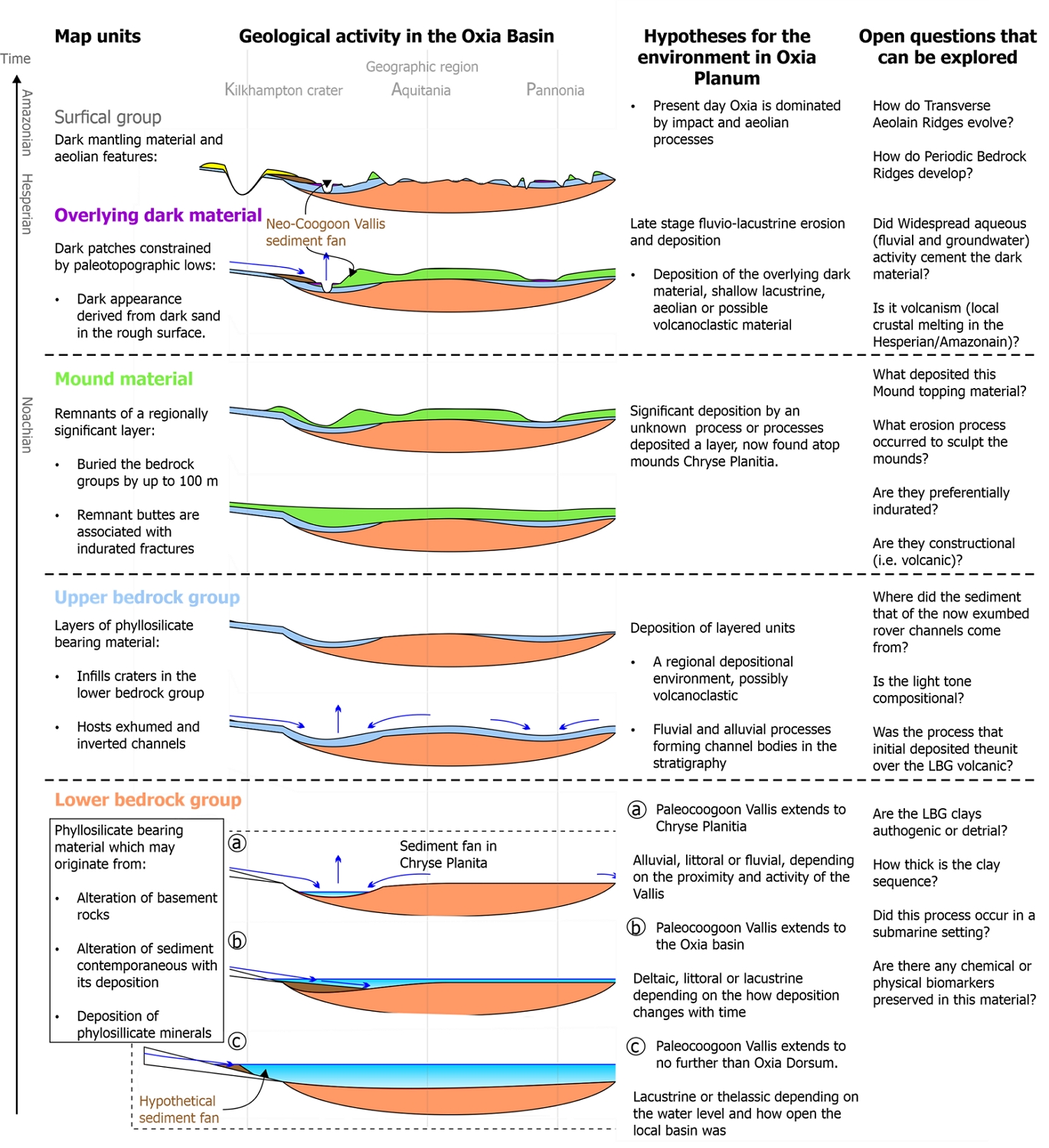- 1The Open University, School of Physical Sciences, Milton Keynes, United Kingdom of Great Britain – England, Scotland, Wales (peter.fawdon@open.ac.uk)
- 2European Space Agency (ESA/ESTEC), Keplerlaan 1, 2201 AZ Noordwijk, The Netherlands
- 3Institut für Planetenforschung, Deutsches Zentrum für Luft und Raumfahrt (DLR), Berlin, Germany
- 4Institut d'Astrophysique Spatiale: Orsay, Île–de–France, France
- 5Department of Earth Science and Enginearing, Imperial College, London, UK
- 6Istituto di Astrofisica Planetologia Spaziali (INAF–IAPS), Via del Fosso del Cavaliere, Roma, Italy
- 7Department of Earth Sciences, Natural History Museum, Cromwell Road, Kensington, London, UK
- 8Université Paris Saclay – CNRS – Institute d'Astrophysique Spatiale, 91405 Orsay, France
- 9Division of Geological and Planetary Sciences, California Institute of Technology, California, USA
- 10Univ Lyon, Univ Lyon 1, ENSL, CNRS, LGL-TPE, Villeurbanne F-69622, France
- 11Physikalisches Institut, University of Bern, Sidlerstrasse 5, 3012, Bern, Switzerland
Oxia Planum is the selected landing site for the ExoMars Rosalind Franklin (RF) Mission, launching in 2028. The science objectives of the mission are to search for signs of life and to characterize the geochemical environment in the subsurface as a function of depth. RF will accomplish this with its ‘Pasteur’ suite of scientific instruments, and a drilling and sampling subsystem to retrieve samples for analysis from as deep as 2 m [1].
In preparation for this mission ESA, though the Rover Science Operations Working Group (RSOWG), has conducted a program of high resolution morphostratigraphic mapping and analysis to understand the geological significance of the landing site, to provide context for in-situ sample analysis and to serve as an input into strategic planning for rover operations. This effort: (i) has defined and described the geography of Oxia Planum as a framework for its exploration [2], (ii) has produced a geological map of the landing site [3], and (iii) in our ongoing work, is building a set of geological hypotheses that the RF rover can test during its nominal mission (in 2030-2031).

Figure. 1: The (a) location and (b) context of Oxia Planum, inc. the availability of CaSSIS data which has been critical to developing our regional understanding. (c) The geological map of the Oxia Planum landing site summarizing the major unit groups (see Figure 2).
Oxia Planum (Figure 1) preserves a record of the diverse geological process that formed and modified the landscape of western Arabia Terra throughout Mars’ geological history. Noachian Terrains contain extensive phyllosilicate–bearing materials in an environment of widespread aqueous alteration [4-7]. These deposits were subsequently added to (and modified by) fluvial activity and burial beneath regional layered terrain in the early Hesperian. They experienced further burial and erosion throughout the Amazonian [8-11]. Consequently, exploring the cross–section of strata exposed in Oxia Planum informs us about the paleoenvironmental conditions across a significant part of martian geological history (symbolized in Figure. 2). Furthermore, as Oxia is topographically open to the north, the processes recorded there probably reflect those occurring along the dichotomy boundary across the wider Chryse/Arabia region [4, 11- 15].
We present: (1) The high-resolution geological map of the landing site in Oxia Planum [3] and the data used to create it [2]. (2) An overview of hypotheses relevant to key events in Oxia Planum's geological history. (3) A discussion of how future RF observations will impact these questions and our wider understanding of Mars.

Figure 2: A summary of our current working hypotheses for the history of Oxia Planum visualized as an East to West schematic cross-section through the Oxia Basin. This connects the major geological units (Figure 1) to outstanding questions, the answer to which will tell us more about the overall geological evolution of Mars.
Acknowledgments: We thank the CaSSIS and HiRISE teams for ongoing data collection in support of the RF rover mission. PF thanks UK Space Agency (ST/W002736/1) and the ExoMars Science Knowledge Program (SKP) for funding.
References: [1] Vago et al. (2017) Astrobiology 17 (6–7), 471–510. [2] Fawdon, et al. (2021) J. Maps, 17:2, 621-637. [3] Fawdon et al. (2024) J. Maps 20(1). [4] Carter J. et al. (2015) Icarus 248, 373-382. [5] Quantin et al. (2021) Astrobiology 21:3, 345-366. [6] Mandon et al. (2021) Astrobiology 21:4, 464-480. [7] Brossier et al. (2022) Icarus 386. [8] McNeil et al. (2023) in LPSC 54 Abs.#1252. [9] Fawdon et al. (2022) JGR-Plan. 127, e2021JE007045. [10] Davis et al. (2023) EPSL 601, 117904. [11] Woodley et al. (2023) J. Maps, [12] Frueh et al. (2023) LPSC 54 Abs.#1440. [13] McNeil et al. 2022 JGR-Plan. 127, e2022JE007246. [14] Molina et al. (2017) Icarus 293 27-44. [15] Tornabene et al. (2023) LPSC 54 Abs.#2727
How to cite: Fawdon, P., Orgel, C., Adeli, S., Balme, M., Carter, J., Davis, J., Favaro, E., Frigeri, A., Grindrod, P., Harris, E., Hauber, E., Loizeau, D., McNeil, J., Mandon, L., quantin-nataf, C., Roberts, A., Thomas, N., Sefton-Nash, E., and Jago, J.: Scientific hypotheses for the ExoMars Rosalind franklin rover mission: a geological history of Oxia Planum., Europlanet Science Congress 2024, Berlin, Germany, 8–13 Sep 2024, EPSC2024-1080, https://doi.org/10.5194/epsc2024-1080, 2024.